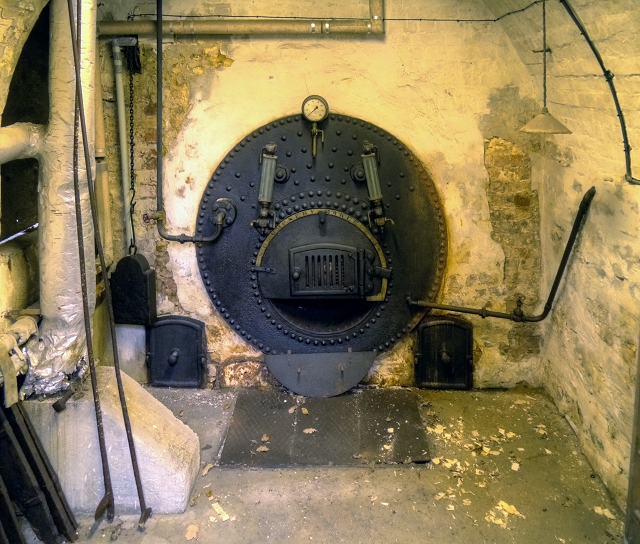SD3788 : Boiler Hearth, Stott Park Bobbin Mill
taken 10 years ago, near to Finsthwaite, Cumbria, England

Purpose-built in 1835, this extensive working mill tucked away in a wooded glade near the village of Finsthwaite, just to the west of Lake Windermere, provided literally millions of the wooden bobbins vital to the Lancashire weaving and spinning industry; a typical cotton mill of the early 19th century might have thousands of spindles, and each spindle required several bobbins. Although relatively small compared to other mills, some 250 men and boys (some drafted in from workhouses) worked here over the years in often arduous conditions to produce up to a quarter of a million bobbins a week The valley location was ideally situated to take advantage of good growing conditions for coppiced wood, which was the raw material from which bobbins were made.
The mill was originally powered by a water wheel drawing the water supply from the nearby mill pond to power its lathes. A water turbine was introduced in 1858, and in 1880 a steam engine was added, not to replace the water turbine, but to supplement it during the drier summer months when the flow of water in the streams was low. Most steam turbines of that period ran on coal, but the one at Stott Park was made to run on the wood by-products of the milling process. The original steam turbine was replaced in the 1890s, and again in 1931. Finally, the steam turbines were replaced by a more efficient pair of electric motors in 1941. The steam turbine can still be seen in operation, however.
The demand for bobbins for the textile industry, which had boomed in the earlier part of the nineteenth century fell dramatically from the time of the cotton famine Linkin the 1860s and mills such as Stott Park had to diversify to survive. By the twentieth century, Stott Park produced a wide variety of wooden implements, from rungs for rope ladders used by the British Navy, to tool handles and toggles for duffle coats. Diversifying in this fashion helped the mill to survive long after many of its contemporaries had closed down.
The mill was closed in 1971 but it was reopened in 1983 as a museum under the care of the Department of the Environment, and passed to the care of English Heritage the following year. It is open to the public at advertised times (LinkEnglish Heritage)
More information - LinkBritain Express
